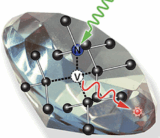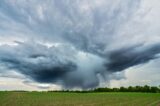An NYU fellow accelerates algorithms that run vital processes backward.


Knowing the unknowns
A Georgia Tech fellow models renewable energy and other problems with ever-changing unknowns.

Unpacking snow
A UC Berkeley fellow applies machine learning to snowpack monitoring and more.
Sidebar: Quantum roots
Rahul Sahay’s quantum mechanics research started at his undergraduate school, the University of California, Berkeley. For his final project, working with DOE Computational Science Graduate Fellowship alumnus Norman Yao, he worked on the interface between many-body physics —the interactions of lots of particles with one another — and the theories underpinning quantum computing. Sahay likes […]

Sculpting nature
A Harvard University fellowship recipient works to create quantum phases of matter.

Categorical imperative
A Montana State fellow charts a path from physics and modeling to a form of pure math called category theory.

Predicting chaos
A Caltech fellowship recipient works on the physics underlying turbulence, or the chaotic gain of energy when fluids move in unpredictable ways.

Scale-tamer
A recent program alum interweaves large and small scales in wind-energy and ocean models.

Exploring electrons
At UC Berkeley, a fellow applies machine learning to sharpen microscopy.

Subduing software surprises
A Cornell University fellowship recipient works on methods for ensuring software functions as expected.

‘Crazy ideas’
A UCSD engineering professor and former DOE CSGF recipient combines curiosity and diverse research experiences to tackle nanoscale questions and energy applications.

Star treatment
A UT Austin-based fellow blends physics and advanced computing to reveal cosmic rays’ role in stellar events.

New home for science and tech talk
With the fifth season’s first episode, a DOE CSGF-sponsored podcast launches a website.

Bolt basics
A Rice University fellow simulates the ins and outs of the familiar fasteners in pursuit of lean machines.

‘Putting it all together’
A Vanderbilt University fellowship recipient applies math, physics and computation to sort out semiconductor defects.


Genomic field work
A UC Davis fellow combines computing, the corn genome and growing data to help farmers forecast biofortified crop production.

Tracking space debris
A Computational Science Graduate Fellowship recipient monitors threats to satellites in Earth’s ionosphere by modeling plasma waves.

Decisive achievement
A computational sciences fellow models COVID-19 virus variants and examines how people weigh complex decisions.

Learning climate
A Colorado State fellow employs machine learning for climate modeling, putting provenance behind predictions.

Statistically significant
A LANL statistician helps cosmologists and epidemiologists grasp their data and answer vital questions.
Cutting carbon, blocking blooms
Besides bioplastics research, the LANL Biofuels and Bioproducts team is studying carbon neutrality and applying machine learning to climate change-exacerbated algal blooms. The lab spearheads a DOE project that will bring carbon neutrality to New Mexico, Arizona, Utah, Colorado, Wyoming and Montana under the Intermountain West Energy Sustainability and Transitions (I-WEST) initiative. The region is […]

Planet-friendly plastics
A Los Alamos team applies machine learning to find environmentally benign plastics.

A split nanosecond
Sandia supercomputer simulations of atomic behavior under extreme conditions advances materials modeling.





